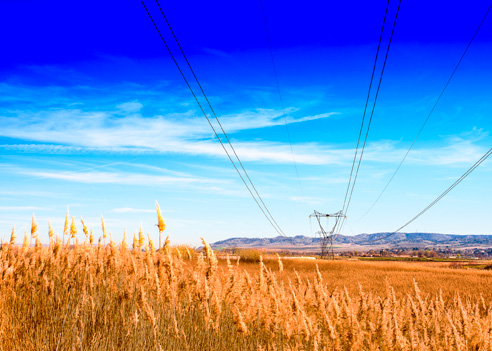For 40 years, we've been driving our country's economic and social progress. Four decades shaping Spain.
Demand for electricity in Spain increases 1.4% in December
- 50.4% of monthly generation came from renewable sources and 73.8% was produced from technologies that do not emit CO2 emissions
- Demand for electricity in the Canary Islands fell by 9.6% and increased by 3.8% in the Balearic Islands compared to December 2019
National electricity demand in December is estimated at 22,419 GWh, 1.4% higher than in the same month last year. After having factored in the influence of seasonal and working patterns, demand is 0.2% higher than in December 2019.
For 2020 as a whole, total annual demand is estimated at 249,970 GWh, 5.6% less than in 2019. Once again, after having factored in the influence of seasonal and working patterns, demand is 5.5% lower than in the previous year.
In December, and according to data estimated at the time of this press release, generation coming from renewable energy sources represented 50.4% of the total production. This is due to the fact that December has had particularly favourable weather conditions for the generation of clean energy. Specifically, daily wind energy generation in Spain hit an all-time high on 28 December when it recorded a production of 403.8 GWh; a value that exceeds the previous annual record established in 2007.
Thanks to the good figures registered in December, renewable generation over the twelve months of the year reached 110,577 GWh, 44% of the total production nationwide. In December, 73.8% of electricity generation was obtained technologies which produce zero CO2 emissions.
Similarly, based on information available at the time of this press release, wind energy generation in December stood at 7,455 GWh, a figure that is 36.1% higher than in the same period last year, and represented 31.4% of the overall generation mix nationwide in December.
Demand for electrical energy in the peninsular electricity system grows 1.7%
Demand for electrical energy in the peninsular electricity system in the month of December is estimated at 21,271 GWh, a value that is 1.7% higher than that recorded in the same month last year. After having factored in the influence of seasonal and working patterns, the demand for electricity is 0.4% up on that registered in December 2019.
In the year as a whole, the cumulative demand for electricity on the Spanish Peninsula is estimated at 236,654 GWh, a figure that is 5.1% less than in 2019. After factoring in the influence of seasonal and working patterns, overall annual demand in 2020 shows a value that is 5.0% lower than that registered for 2019.
During December, and according to data estimated at the time of this press release, 52.2% of peninsular generation came from renewable energy sources and 76.6% was obtained using technologies which produce zero CO2 emissions.
Wind energy produced 7,391 GWh, 36.7% more than in December last year, and contributed 32.5% to the overall generation mix nationwide.
Demand for electricity in December falls in the Canary Islands and increases in the Balearic Islands
In the Balearic Islands, the demand for electricity in December is estimated at 437,719 MWh, a value that is 3.8% higher than that recorded in the same month last year. After having factored in the influence of seasonal and working patterns, the figure is 4.3% higher than in December 2019. For 2020 as a whole, demand in the Balearic Islands is estimated at 4,942 GWh, 19.2% less than the cumulative value registered for 2019.
Combined cycle, with 55.1% of the total production, was the leading source of electricity generation in the Balearic Islands, and coal-fired generation stood second at 26.7%. Renewable technologies and those which produce zero CO2 emissions accounted for 5.0% of the total generation mix in the archipelago.
Furthermore, energy transferred via the Spanish Peninsula-Balearic Islands link contributed to covering 31.6% of the demand in the archipelago.
Regarding the Canary Islands, electricity demand is estimated at 675,614 MWh, 9.6% less than that recorded in December 2019. After having factored in the influence of seasonal and working patterns, the figure falls by 9.7% compared to the same month last year. From January to December, demand in the Canary Islands is estimated at 7,965 GWh, down 10.2% on the same period last year.
In December, and according to data estimated at the time of this press release, combined cycle was the leading technology in the Canary Islands’ generation mix with a contribution of 48.4%. Renewable technologies and those which produce cero CO2 emissions represented 11.8% of the total generation on the Canary Islands.
Consult our Daily Balance Report for more information on the National, Peninsular, Balearic Islands and Canary Islands electricity systems as at the close of December.












